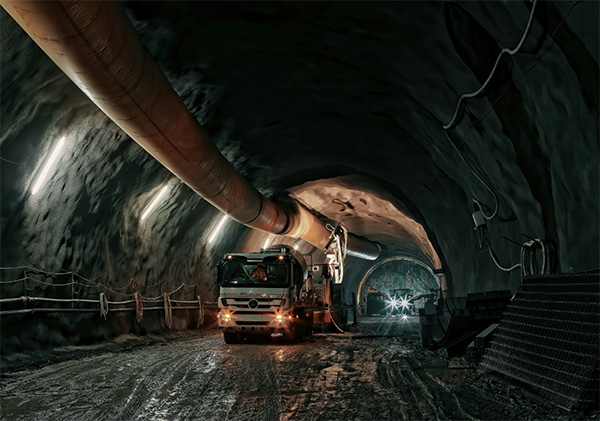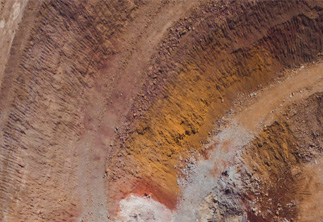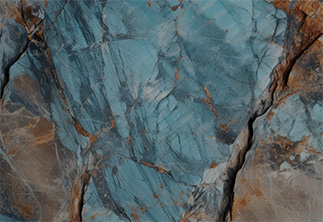Green Mineral Profile
Copper
Overview
Overview
Africa plays a strategic role in global copper production and exploration, with major contributors being the Democratic Republic of Congo (DRC), Zambia, South Africa, and Namibia. The DRC and Zambia together hold 6% of global copper reserves. Notable mining projects in the DRC include the Tenke Fungurume, Katanga, and Kamoa-Kakula projects. Zambia hosts significant operations like the Sentinel, Kansanshi, Lumwana, and Nchanga mining projects. South Africa’s Palabora Mining Project is a major copper mine.
Main export destinations for raw copper vary by country, with China being a key destination for the DRC, Switzerland for Zambia, and India for South Africa.

Copper reserves
Africa is a strategic region for copper production and exploration, with the major countries involved in the copper industry being the Democratic Republic of Congo (DRC), Zambia, South Africa and Namibia.
- The DRC and Zambia together account for 50,000 tonnes of global copper reserves which represent 5% of total global copper reserves.
- The top five countries with the largest share of copper reserves are Chile (23%); Australia (11%); Peru (9%); Russia (7%); and Mexico (6%).
(30,000 tonnes)
(20,000 tonnes)
(13,000 tonnes)
(11,000 tonnes)
Copper production
The DRC was the fourth largest producer of copper in 2021, behind Chile, Peru and China. The DRC accounted for 8% of global production in 2021 and holds 3% of global copper reserves.
Zambia, Russia and Australia were tied as sixth largest producers of copper in 2021. Zambia accounted for 4% of global production in 2021 and holds 2% of global copper reserves.
(1,800 tonnes)
(830 tonnes)

Major copper
mining projects
 DRC
DRC
Tenke Fungurume, located in the Katanga province of the DRC, is one of the largest high-grade copper-cobalt deposits in the world. In production since 2009, the mine is owned and operated by Tenke Fungurume Mining.
China Molybdenum, the world’s second largest cobalt producer, currently holds a controlling 80% ownership in the mine with Gecamines, DRC’s state-owned mining firm, holding the remaining 20%.
Katanga mine is an open-pit copper-cobalt project located in the Lualaba province of the DRC. Katanga mine is owned and operated through two joint ventures named Kamoto Copper Company and DRC Copper and Cobalt Project. Glencore owns 86.3% of Katanga Mining Limited, which holds 75% stake in Kamoto Copper Company. State-owned mining companies La Generale des Carrieres et des Mines and La Societe Immobiliere du Congo hold the remaining the 25% stake in the Kamoto Copper Company.
Kamoa-Kakula is projected to be the world’s highest-grade major copper mine and is a joint venture between Ivanhoe Mines (39.6%), Zijn Mining Group (39.6%), Crystal River Global Limited (0.8%) and the Government of the DRC (20%).
 Zambia
Zambia
Sentinel Copper mine is in the Kalumbila district of the North Western province of Zambia and is one of the largest copper producing mines in Africa. Starting production in 2016, the mine is owned and operated by Kalumbila Minerals, a wholly owned subsidiary of Canadian metals and mining company First Quantum Metals.
Kansanshi copper-gold mine located near Solwezi in Zambia is currently the largest copper mine by production in Africa. The open-pit mine is owned and operated by Kansanshi Mining, a joint venture between First Quantum Minerals (80%), and the Zambia Consolidated Copper Mines Investment Holdings (20%).
Lumwana copper mine is a conventional open-pit operation and is located west of Solwezi in Zambia’s copper belt – one of the most prospective copper regions in the world. Barrick Gold Corporation owns 100% of Lumwana mine through Lumwana Mining Company Limited.
Nchanga copper mine is owned by Vedanta Resources Limited (79.4%) with the remaining 20.6% owned by Zambia Consolidated Copper Mines Investment Holdings.
 South Africa
South Africa
Palabora Copper Limited, a subsidiary of Palabora Mining Company Limited, is a copper mine that also operates a smelter and refinery complex based in the town of Phalaborwa, in South Africa’s Limpopo province. The mine is owned by Palabora Mining Company (74%) and Empowerment Partners (26%).
Main copper export destinations
 DRC exports in 2020
DRC exports in 2020
|
|---|
| China ($566 million) |
| United Arab Emirates ($103 million) |
| Namibia ($36.3 million) |
| South Africa ($21 million) |
| Singapore ($5.14 million) |
 Zambia exports in 2020
Zambia exports in 2020
|
|---|
| Switzerland ($2.3 billion) |
| China ($1.19 billion) |
| Namibia ($1.15 billion) |
| Singapore ($660 million) |
| India ($276 million) |
 South Africa exports in 2020
South Africa exports in 2020
|
|---|
| India ($326 million) |
| China ($271 million) |
| Austria ($9.48 million) |
| Hong Kong ($6.03 million) |
| Chinese Taipei ($3.27 million) |
 Namibia exports in 2020
Namibia exports in 2020
|
|---|
| Belgium ($129 million) |
| Germany ($104 million) |
| Netherlands ($55 million) |
| South Korea ($14 million) |
| China ($11 million) |
Processing capacity
Processing capacity
Rio Tinto subsidiary Palabora Mining Company operates a mine, smelter and refinery complex and acts as South Africa’s only refined copper producer.
The Kamoa Copper Project, situated in the Kolwezi District of Katanga in the DRC, is expected to build an in-house smelter with a capacity of 300 000 tonnes per year of blister copper for its copper resource.
The fact that the DRC and Zambia have capacity to process their ores to almost the production of the refined metal is encouraging. There is a significant amount of value addition potential to Cu-Co ore, and it is hoped this can include the cobalt process circuit.

Value add initiatives
An area for coordination is in developing regional value chains. Coordinated across an entire region, such as Southern Africa, some industrial clusters might flourish. Reginal bodies like Southern African Development Community (SADC) and initiatives like the African Continental Free Trade Area (AfCTFA) have an important role to play here.
Another potential investment zone is East Africa where Uganda is on the verge of commissioning an EV plant, starting with hybrid vehicles. The pilot project was completed and factory construction is almost complete, but the lithium-ion battery will have to be imported even though Uganda is already endowed with lithium-ion minerals in its backyard.
Thank you for your message!
Your message has been sent. Our aim is to get back to you within a few business days. If you have any questions, please feel free to contact us on AMDC@africa-union.org.
Exception occurred
Feedback
Please use this form to send feedback on this page (see our privacy policy and cookie policy). Please note that we may take a few days or weeks to respond.






